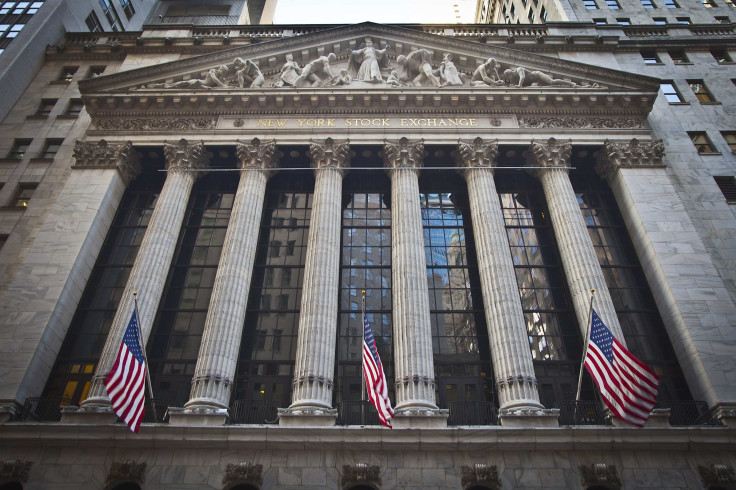Wall Street’s Week Ahead: Dow Jones Industrial Average Gains On Microsoft Corporation (MSFT) Ahead Of Jobs Report

U.S. stocks traded higher Monday, as investors look ahead to Friday's release of the pivotal jobs report for May. A robust U.S. nonfarm payroll report could provide further evidence that the U.S. economy is on a strong enough footing to absorb the impact of a Federal Reserve interest rate hike in September.
In afternoon trading, the Dow Jones Industrial Average (INDEXDJX:.DJI) gained 72.33 points, or 0.40 percent, to 18,083. The Standard & Poor's 500 (INDEXNASDAQ:.IXIC) added 8.08 points, or 0.38 percent, to 2,115. The Nasdaq composite (INDEXSP:.INX) rose 24.29 points, or 0.48 percent, to 5,094.
Microsoft Corporation (NASDAQ:MSFT) was the largest gainer in the Dow Monday, adding 1.7 percent after the software giant announced Windows 10 will be released on July 29 in 190 countries as a free upgrade for users of Windows 7 and Windows 8.1.
Meanwhile, mass media and entertainment giant Walt Disney Co. (NYSE:DIS) added 1 percent to $111.77. The gains follow a report over the weekend from Barron's that said the stock could climb 50 percent over the next three years to $165, boosted by Disney's profits from movies, theme parks and cruise lines, as well as merchandise sales.
The Burbank, California, company announced Monday Chief Financial Officer James Rasulo would step down at the end of June after taking over as CFO five years ago. The move comes nearly four months after Rasulo was passed over for the role of chief operating officer, losing out to Thomas Staggs as second-in-command to CEO Robert Iger.
Dow component Intel Corporation (NASDAQ:INTC) was the biggest laggard in the blue-chip index, dropping 1.6 percent after the world's biggest chipmaker announced it is buying Altera Corporation (NASDAQ:ALTR) in an all-cash transaction for $16.7 billion, or $54 per share.
Monday’s losses in the S&P 500 were led by the energy sector, with Noble Corp. PLC (NYSE:NE) declining 2 percent.
This is an important week for the financial markets because of the market-moving nature of the U.S. employment report. Investors will assess the labor market situation to determine whether late summer or early fall is still a valid time frame for the Fed to hike rates.
“The ‘goldilocks’ economy tends to still be intact, and provided the number that comes out on Friday doesn’t knock that trajectory off, we expect September to continue to be the time frame for the Fed,” said David Schiegoleit, managing director of investment for U.S. Bank Wealth Management in Los Angeles.
The employment report released Friday is expected to show employers added 225,000 jobs in May, up from 223,000 in April, according to analysts polled by Thomson Reuters. The unemployment rate is expected to hold steady at 5.4 percent.
Average hourly earnings are forecast to increase 0.2 percent, and hours worked are expected to hold steady at 34.5 per week.
U.S. stocks traded lower after the opening bell Monday following mixed economic news. Analysts continue to see a recurring theme in the U.S. economy: Household income is outpacing consumer spending. That gap, however, is one that experts say will narrow heading into the summer months.
“Consumers held back on spending, even in the face of lower gas prices. But that process usually takes about a 6 to 9 months to translate into a pickup in consumer spending following a drop in energy prices,” Schiegoleit said. “We could see consumer spending pick up in the summer months, which could help boost the consumer discretionary sector.”
Consumer spending, which accounts for nearly two-thirds of U.S. economic activity, was flat in April and recorded its weakest performance in three months. Americans remained cautious and kept income gains in savings, as the personal saving rate jumped to 5.6 percent of after-tax incomes, the second-highest level since December 2012.
Consumer spending rose 0.4 percent in April, while March’s reading was revised higher to 0.5 percent, the Commerce Department said Monday.
Separately, construction spending jumped to a six-year high in April, while the pace of manufacturing growth rose in May, rebounding from its slowest pace in almost two years.
Greece’s debt drama also weighed on investor sentiment Monday, as Athens nears another deadline for a debt payment Friday. Athens is risking default and exit from the eurozone, as it is due to repay the International Monetary Fund 1.6 billion euros ($1.8 billion) this month, with a payment of 300 million euros ($327 million) on June 5.
Here's the latest economic calendar for the week of June 1. All listed times are EDT.
Monday
- 8:30 a.m. -- Consumer spending (April)
- 9:45 a.m. -- Markit PMI (May)
- 10 a.m. -- ISM (May)
- 10 a.m. -- Construction spending (April)
Tuesday
- 10 a.m. -- Factory orders (April)
- TBA -- Motor vehicle sales (May)
Wednesday
- 8:15 a.m. -- ADP Employment Report (May)
- 8:30 a.m. -- Trade deficit (April)
- 10 a.m. -- ISM nonmanufacturing (May)
- 2 p.m. -- Federal Reserve Beige Book
Thursday
- 8:30 a.m. -- Weekly jobless claims
- 8:30 a.m. -- Productivity (Q1)
Friday
- 8:30 a.m. -- Unemployment rate/Nonfarm payrolls (May)
Jessica Menton is a writer who covers business and the financial markets. News tips? Email her here. Follow her on Twitter @JessicaMenton.
© Copyright IBTimes 2024. All rights reserved.












